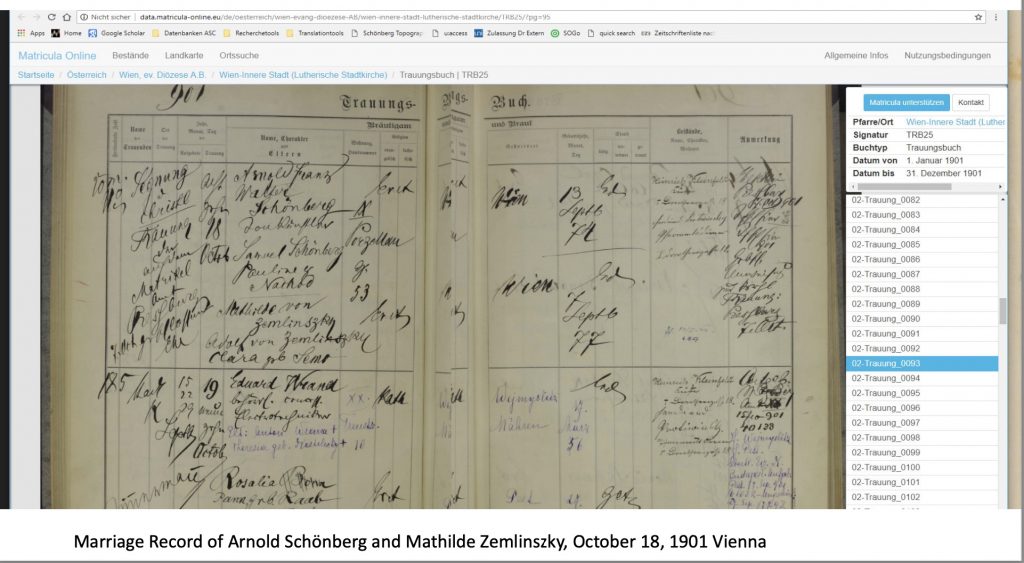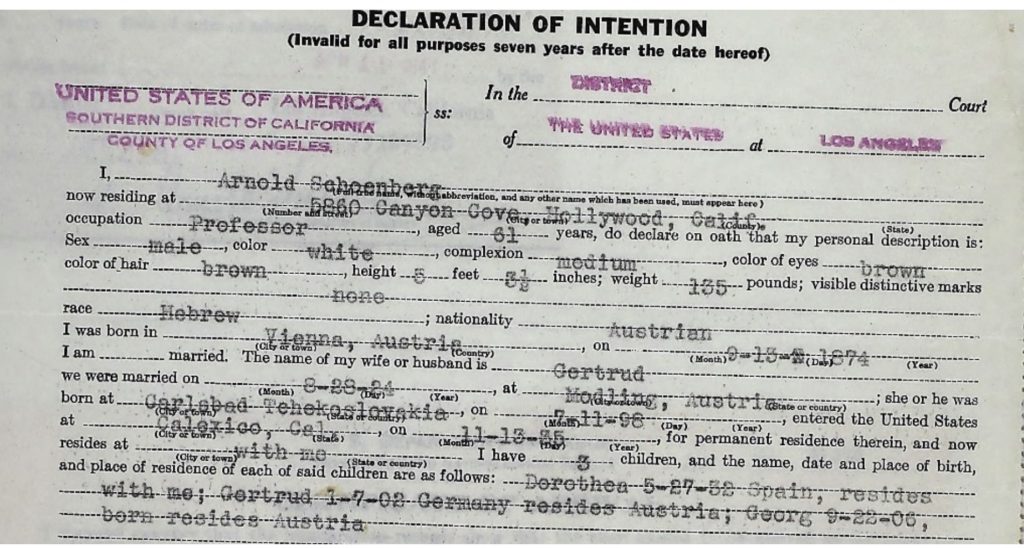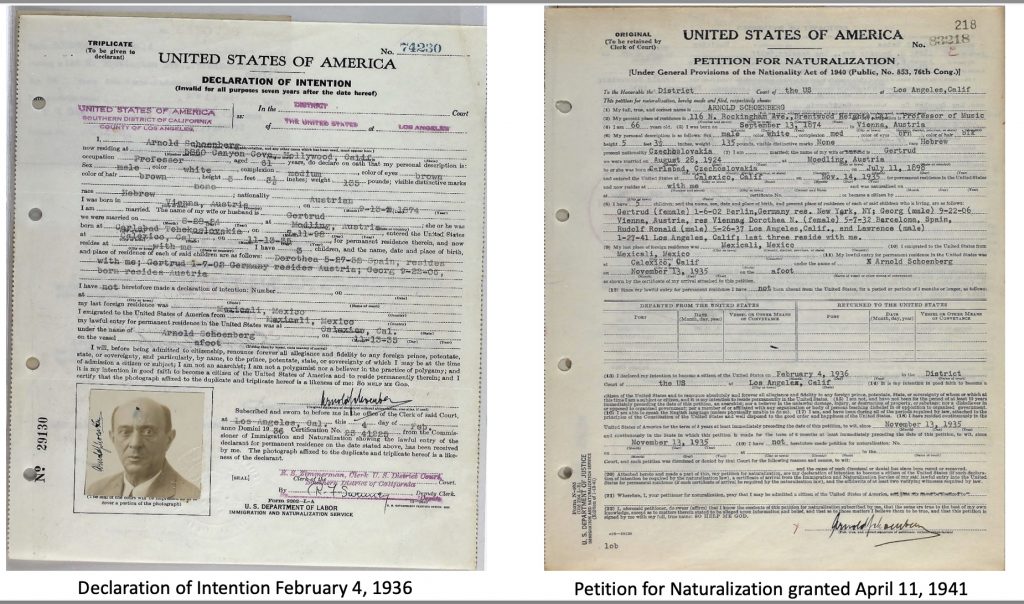Arnold Schoenberg (1874-1951), considered the father of modern music, was the greatest and most influential composer of his generation. He was born in Vienna on September 13, 1874 to Samuel Schönberg and Pauline Nachod, and lived for several periods in Berlin. He fled the Nazis in 1933 and arrived in Los Angeles in 1934, remaining there for the remainder of his life. Schoenberg was married twice, first to Mathilde von Zemlinsky with two children, and then in 1924 to Gertrud Kolisch, with whom he had three more children — Nuria (1932), Ronald (1937) and Lawrence (1941).

Schoenberg was a great composition teacher, with pupils including Alban Berg, Anton Webern and John Cage. He composed in various styles, beginning with the late romantic period, led the way to atonal composition and then invented the 12-tone method. At various times he also composed works in a more traditionally tonal style. He wrote a number of books on composition and music theory, many of which are still in use today. He also painted and exhibited in the first Blaue Reiter exhibition in Munich. In Los Angeles, Schoenberg became friends with George Gershwin, who painted his portrait and filmed him in his home movies. His pupil Serge Hovey also took color film of Schoenberg in Malibu.
Schoenberg was raised Jewish, but converted to Protestantism in 1898 in order to be able to conduct and earn a living. After fleeing from Berlin to Paris in 1933, he returned to Judaism, with a formal document signed by Rabbi Louis-Germain Levy, the artist Marc Chagall and Dmitry Marianoff (the step-son-in-law of Albert Einstein). Several of Schoenberg’s compositions have religious themes, including, Friede auf Erden (Peace of Earth), Weihnachtsmusik (Christmas music), Die Jakobsleiter (Jacob’s Ladder), Moses und Aron, Du sollst nicht ein Bild machen (Thou shall not make a graven image), Kol Nidre, Prelude to Genesis, A Survivor from Warsaw, Psalm 130 (De Profundis) and Modern Psalm. He even drafted sketches for a Jewish Symphony. In the early 1920s he suffered an anti-Semitic incident while summering in the Salzburg area. A famous 1923 exchange with the painter Wassily Kandinsky over anti-Semitism at the Bauhaus includes a warning about the danger of Hitler. Thereafter, he wrote a proto-Zionist play called Der biblische Weg (The biblical path), and then numerous articles and speeches concerning Jewish affairs and the plight of Jews under Hitler.
Schoenberg’s Begleitmusik zu einer Lichtspielszene was written as an accompaniment to an imaginary film.
Arnold Schoenberg died in Los Angeles on July 13, 1951. He was not buried in a cemetery there. His ashes were kept and in 1974, he was interred in an honorary grave in Vienna’s Zentralfriedhof.
See a video made with the audio from Schoenberg’s 1949 My Evolution lecture given at UCLA’s Royce Hall.
See Larry Weinstein’s documentary film My War Years. (On Youtube at Part I. Part II. Part III.)
See the website of the Arnold Schönberg Center in Vienna. https://schoenberg.at/. The archive includes thousands of manuscripts, photos and documents. See the image archive at https://schoenberg.at/index.php/en/archiv-2/bildarchiv
https://www.geni.com/people/Arnold-Schoenberg/6000000002764344064

























